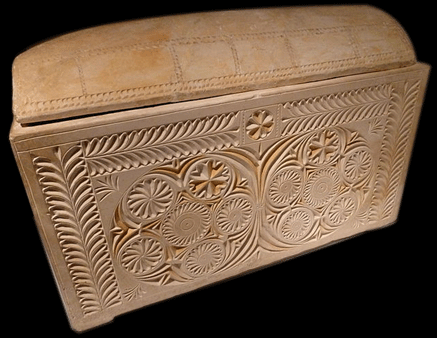Caiaphas Ossuary
Joseph, son of Caiaphas, commonly known simply as Caiaphas in the New Testament, was the Roman-appointed Jewish high priest of the temple in Jerusalem from 18 to 37 A.D., played a key role in the trial and execution of Jesus Christ. Caiaphas accused Jesus of blasphemy, a crime punishable by death under Jewish law.
Christ Before Caiaphas, by Matthias Stom
But the Sanhedrin, or high council, of which Caiaphas was the presiding authority, did not have the authority to execute people. So Caiaphas turned to the Roman governor Pontius Pilate, who could carry out a death sentence. Caiaphas tried to convince Pilate that Jesus was a threat to Roman stability and had to die to prevent a rebellion.

In December of 1990, bulldozers were clearing land in the Peace Forest just south of Jerusalem in an effort to make way for a water park. While excavating the site, workers uncovered an ancient tomb and immediately called the Israel Antiquities Authority to investigate. Within the tomb, archaeologists discovered several ossuaries, including the ossuary of Joseph Caiaphas, a name well known from the New Testament Gospels as the high priest during the time of the Savior’s trial and Crucifixion.
Ossuary of the High Priest Joseph Caiaphas
The especially beautiful ossuary is twice inscribed "Joseph, son of Caiaphas" and held the bones of a 60-year-old male. The limestone ossuary measures 37 cm high by 75 cm long and is housed in the Israel Museum, Jerusalem.

Israel Museum, Jerusalem
.png)